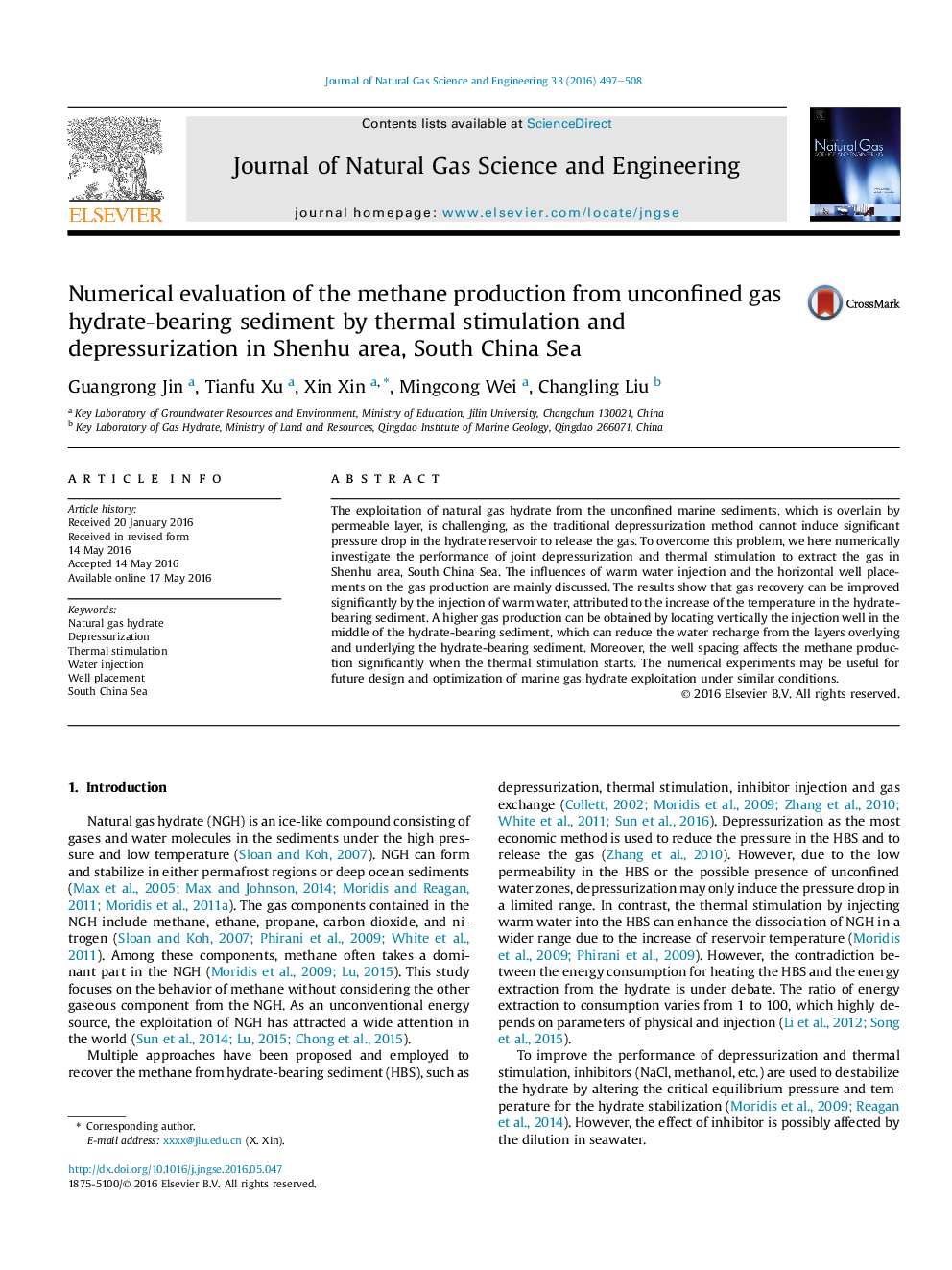| کد مقاله | کد نشریه | سال انتشار | مقاله انگلیسی | نسخه تمام متن |
|---|---|---|---|---|
| 1757087 | 1523008 | 2016 | 12 صفحه PDF | دانلود رایگان |

• Gas recovery from an unconfined hydrate bearing-sediment improves by water injection.
• Injected warm water preferentially flow along hydrate interface.
• Depth of the horizontal injection well is important for methane production.
• Well spacing affects the methane production significantly.
The exploitation of natural gas hydrate from the unconfined marine sediments, which is overlain by permeable layer, is challenging, as the traditional depressurization method cannot induce significant pressure drop in the hydrate reservoir to release the gas. To overcome this problem, we here numerically investigate the performance of joint depressurization and thermal stimulation to extract the gas in Shenhu area, South China Sea. The influences of warm water injection and the horizontal well placements on the gas production are mainly discussed. The results show that gas recovery can be improved significantly by the injection of warm water, attributed to the increase of the temperature in the hydrate-bearing sediment. A higher gas production can be obtained by locating vertically the injection well in the middle of the hydrate-bearing sediment, which can reduce the water recharge from the layers overlying and underlying the hydrate-bearing sediment. Moreover, the well spacing affects the methane production significantly when the thermal stimulation starts. The numerical experiments may be useful for future design and optimization of marine gas hydrate exploitation under similar conditions.
Journal: Journal of Natural Gas Science and Engineering - Volume 33, July 2016, Pages 497–508